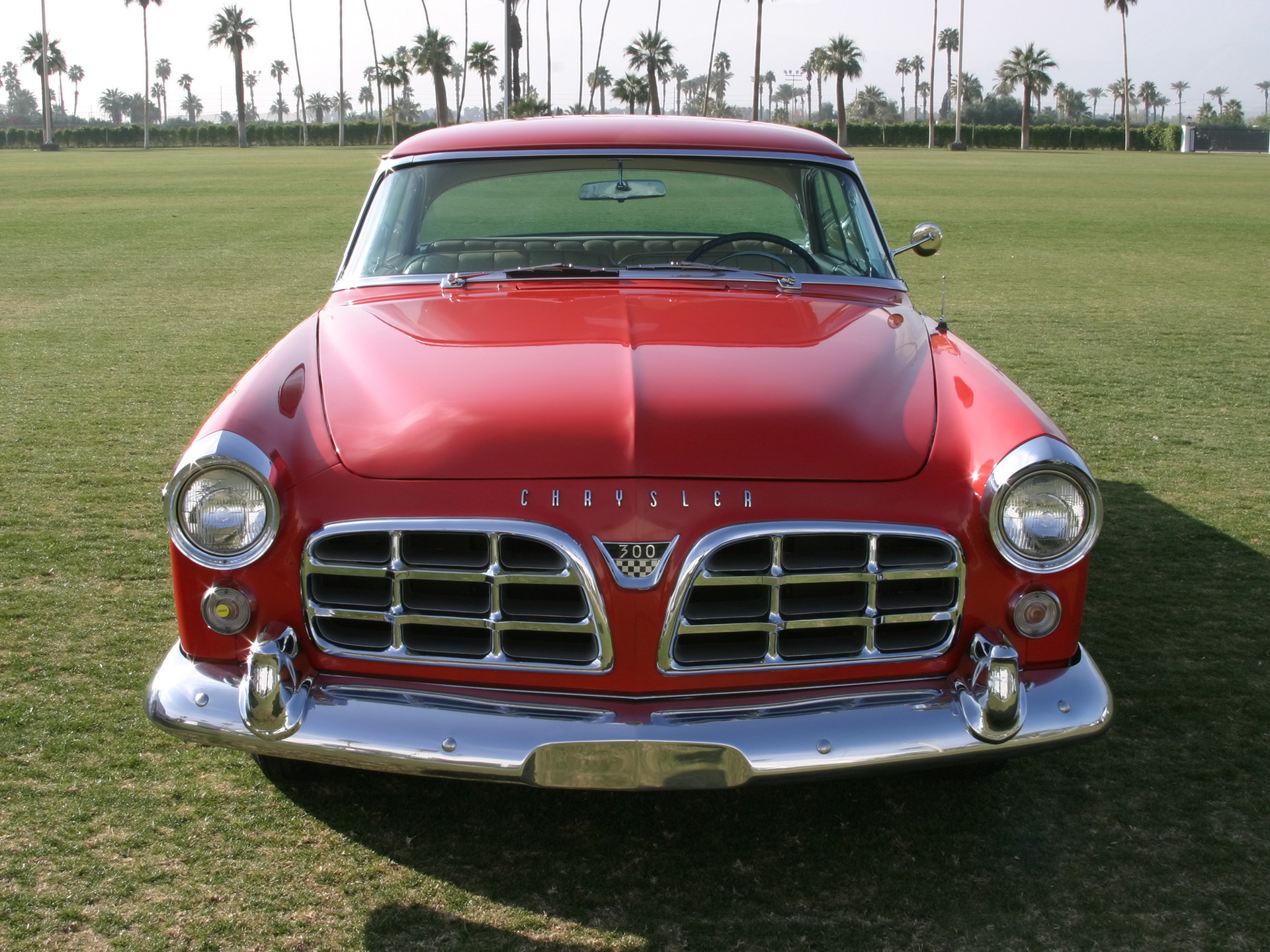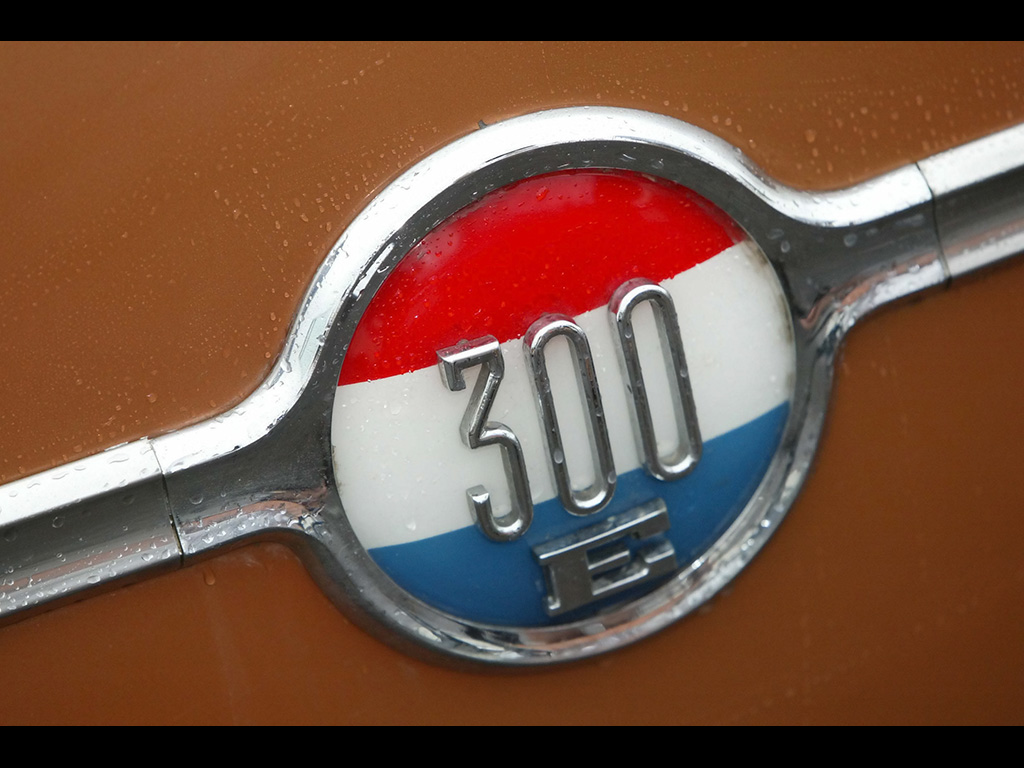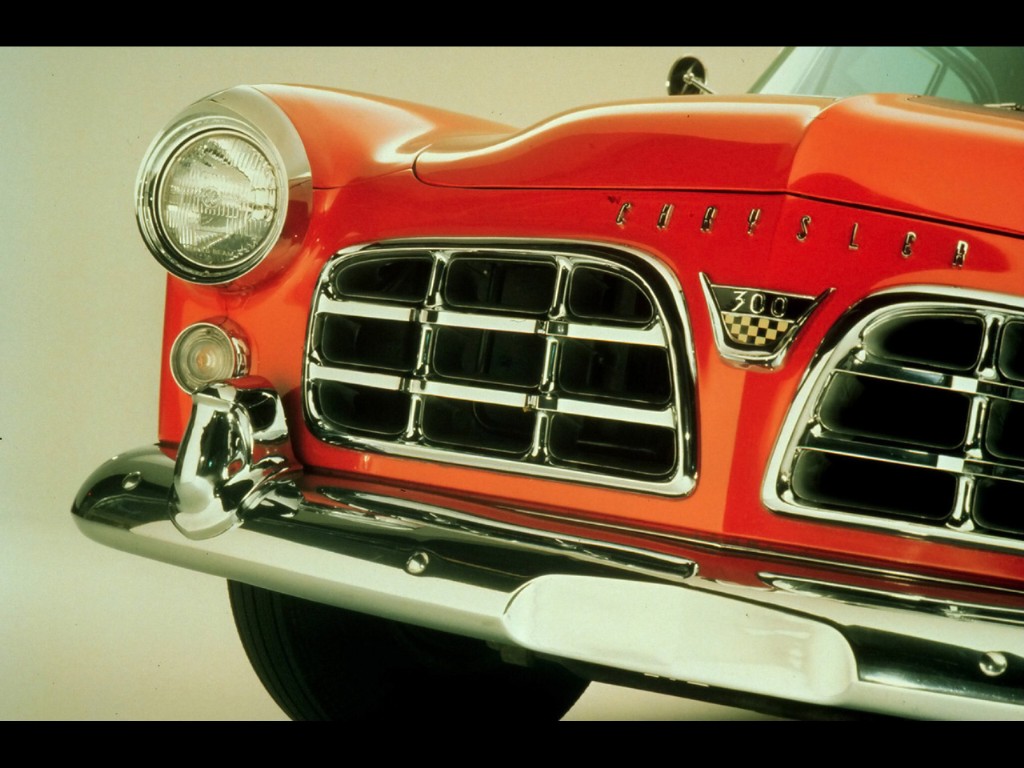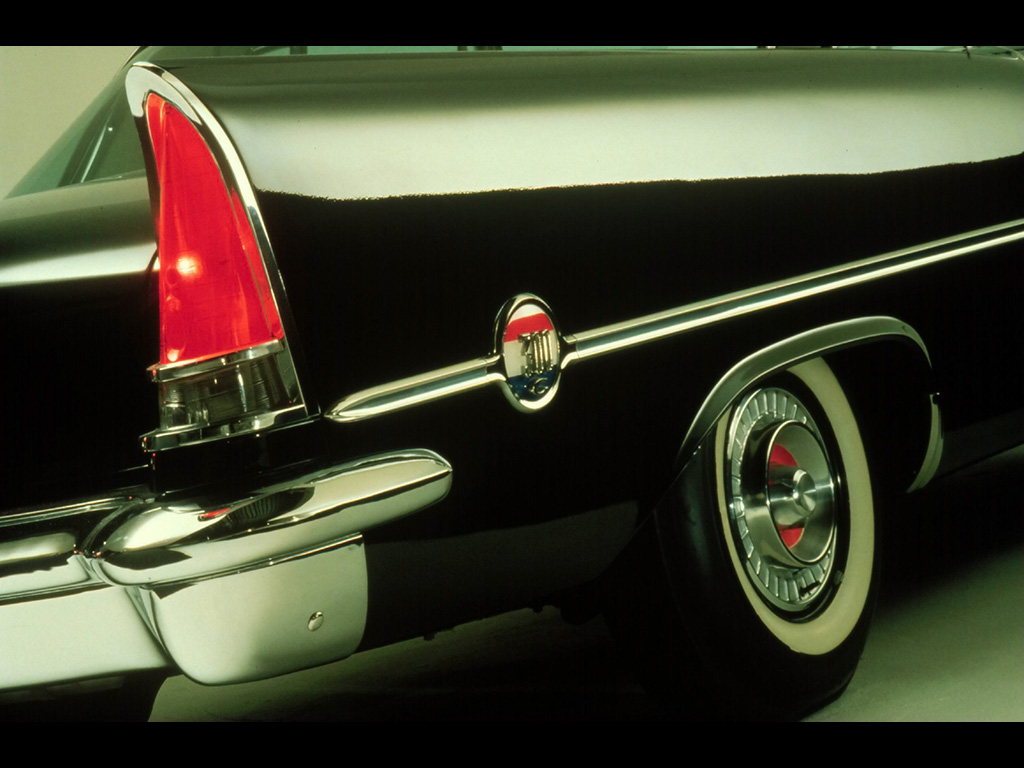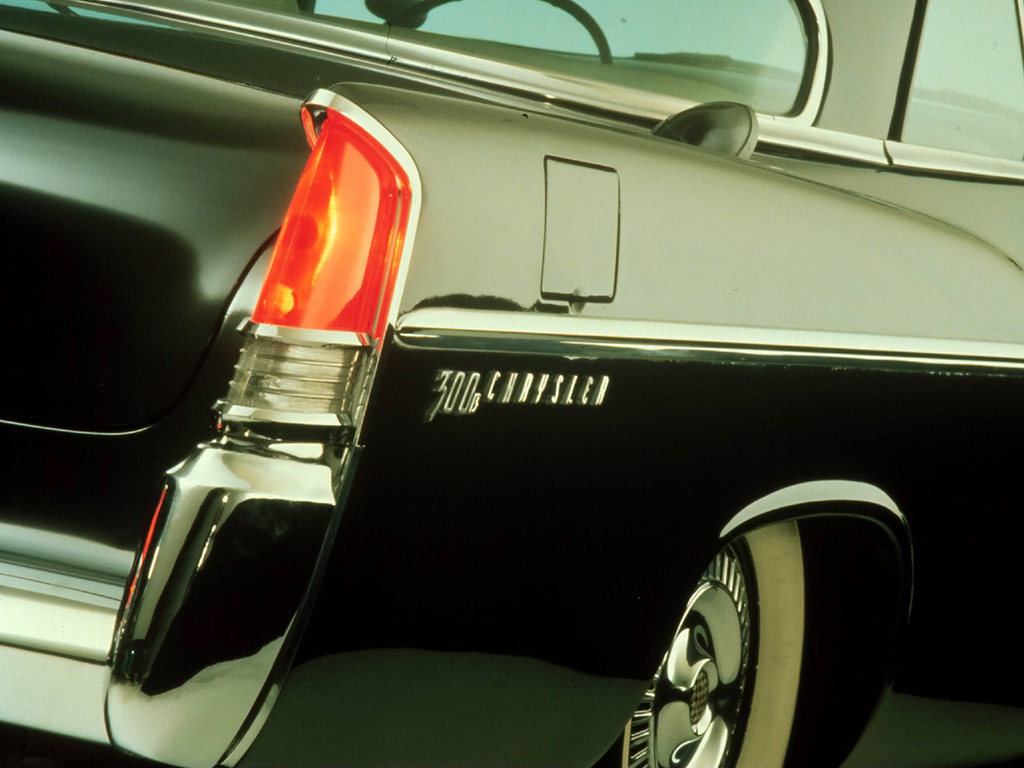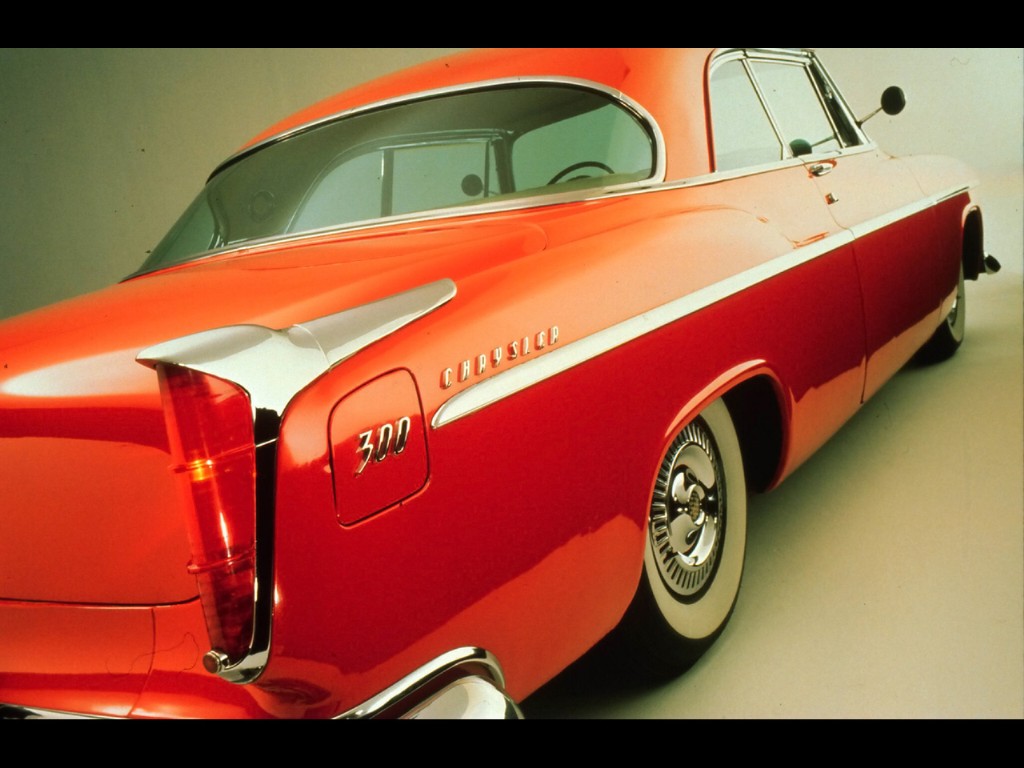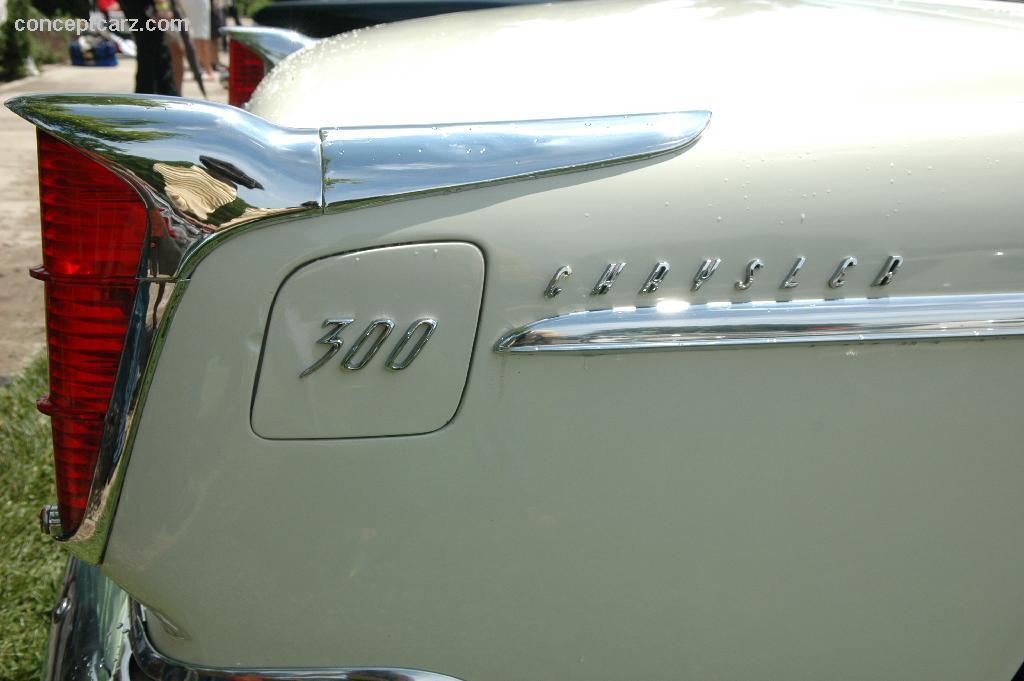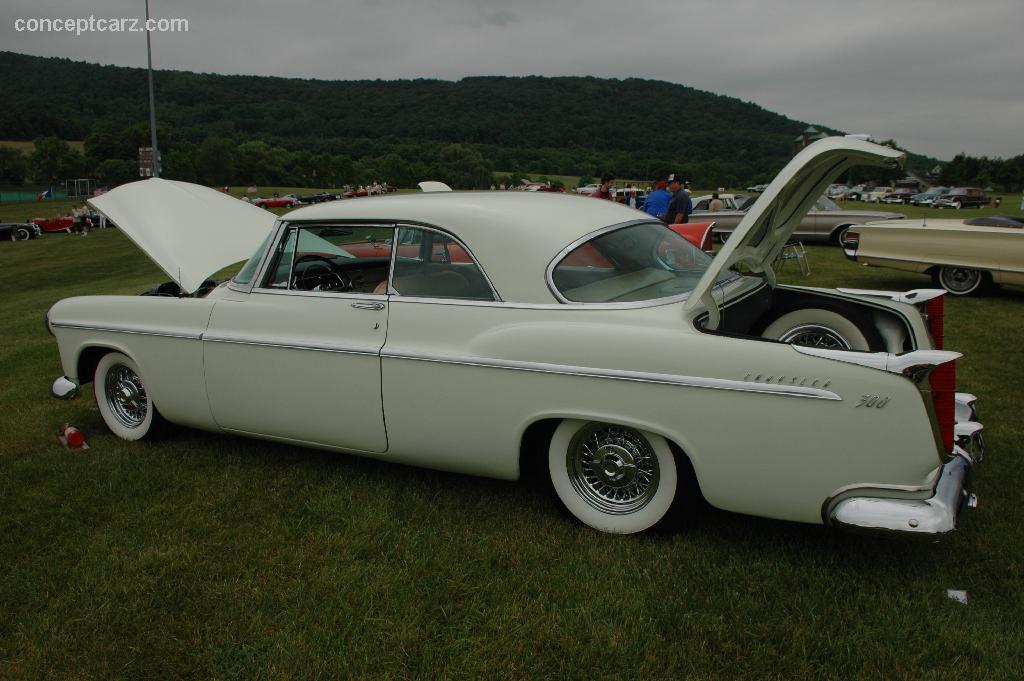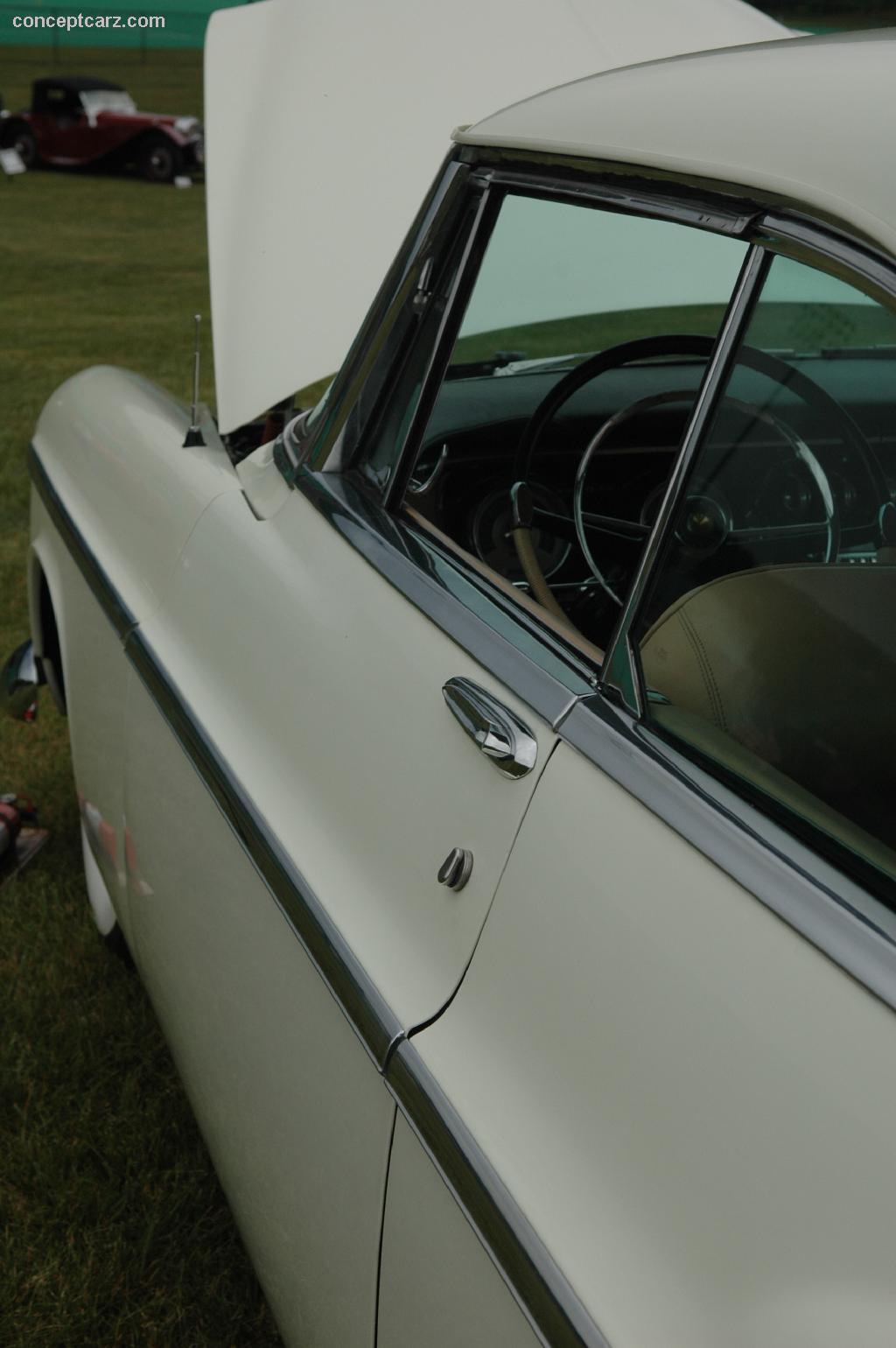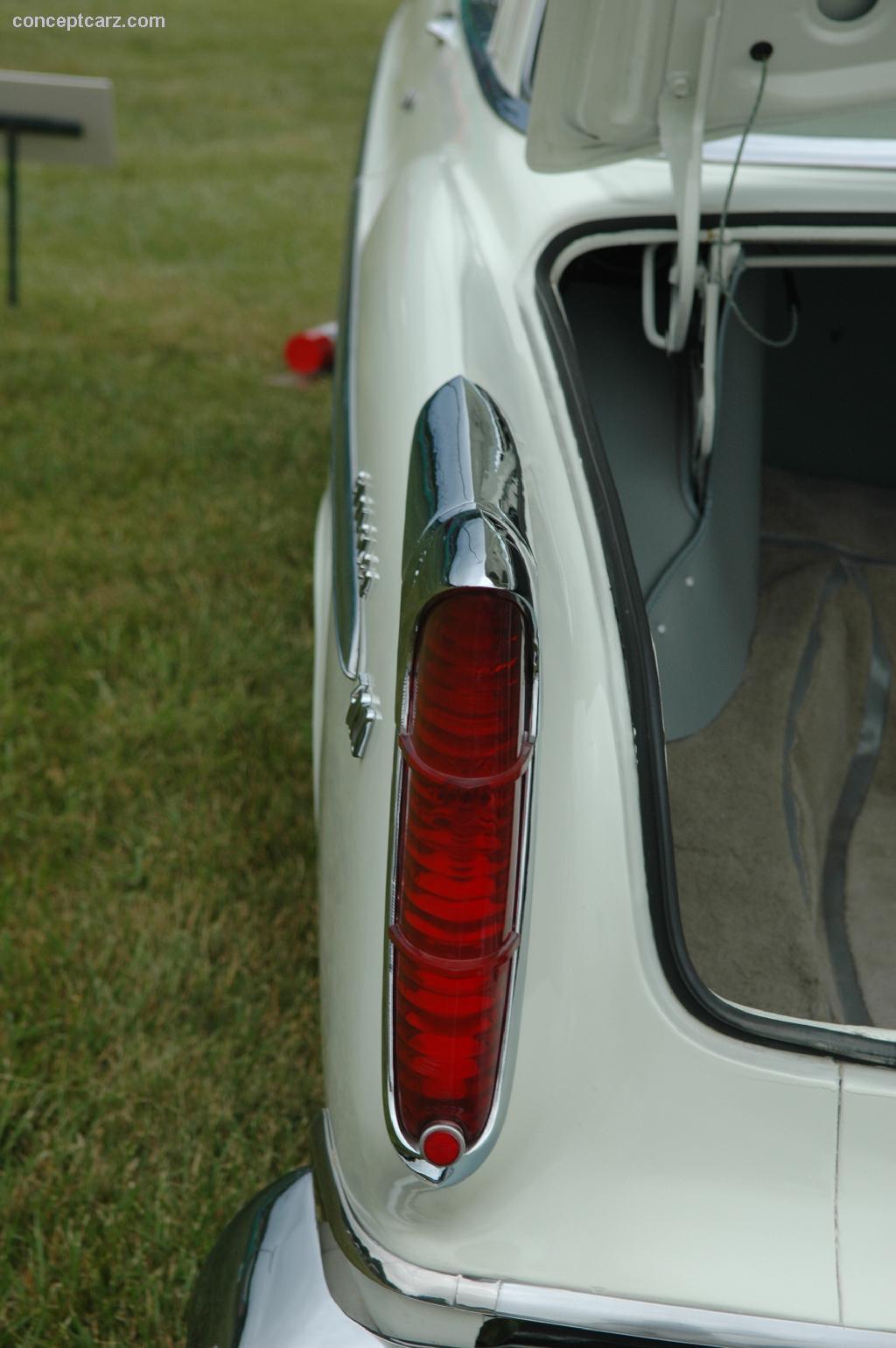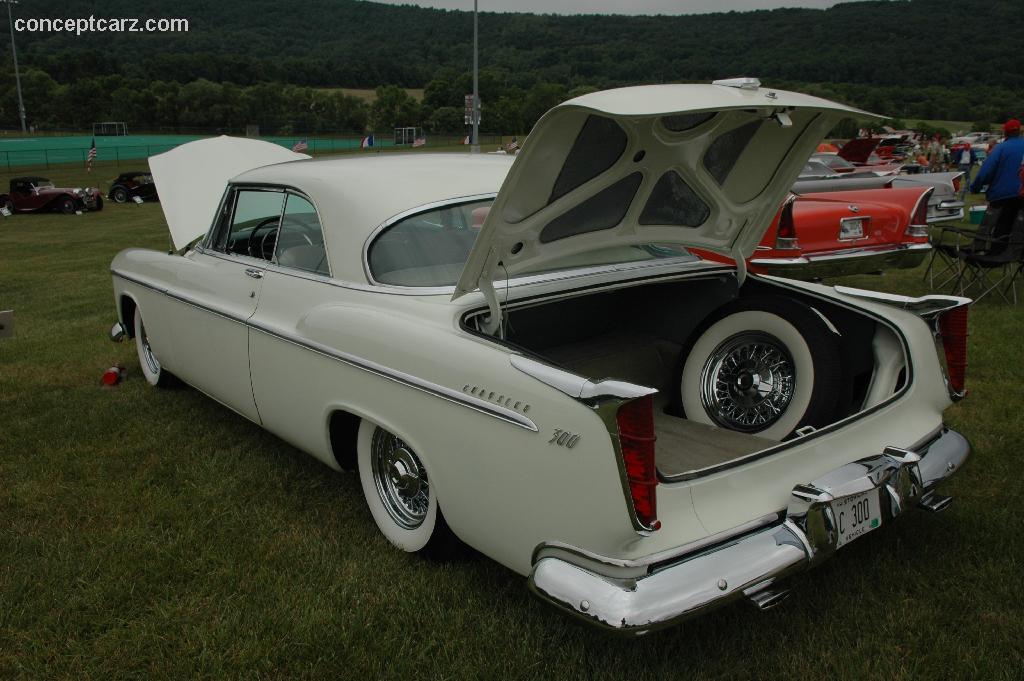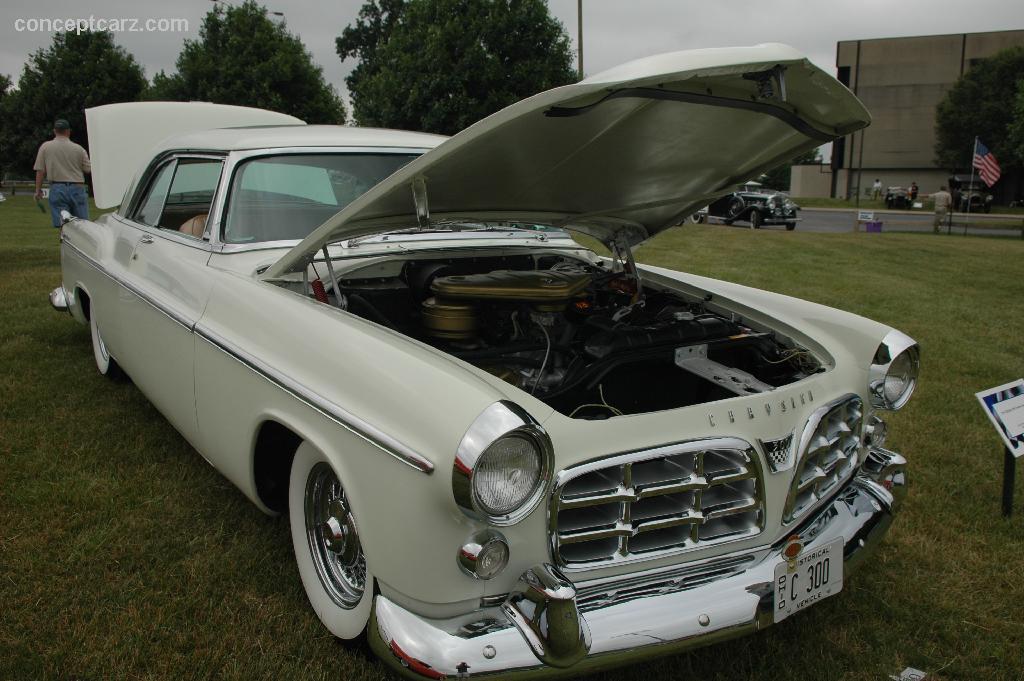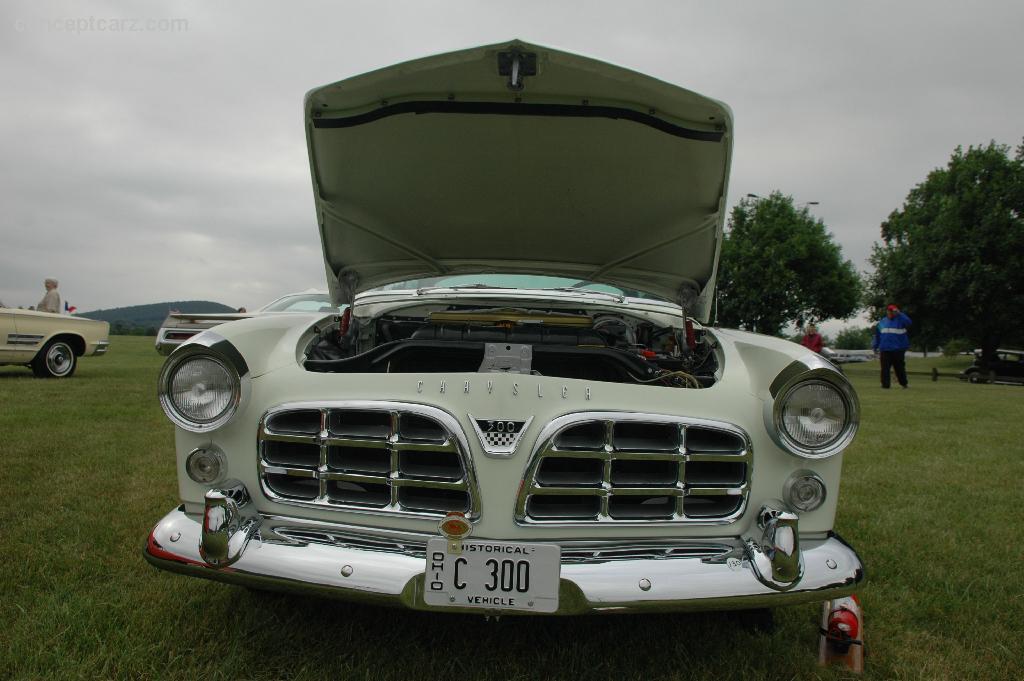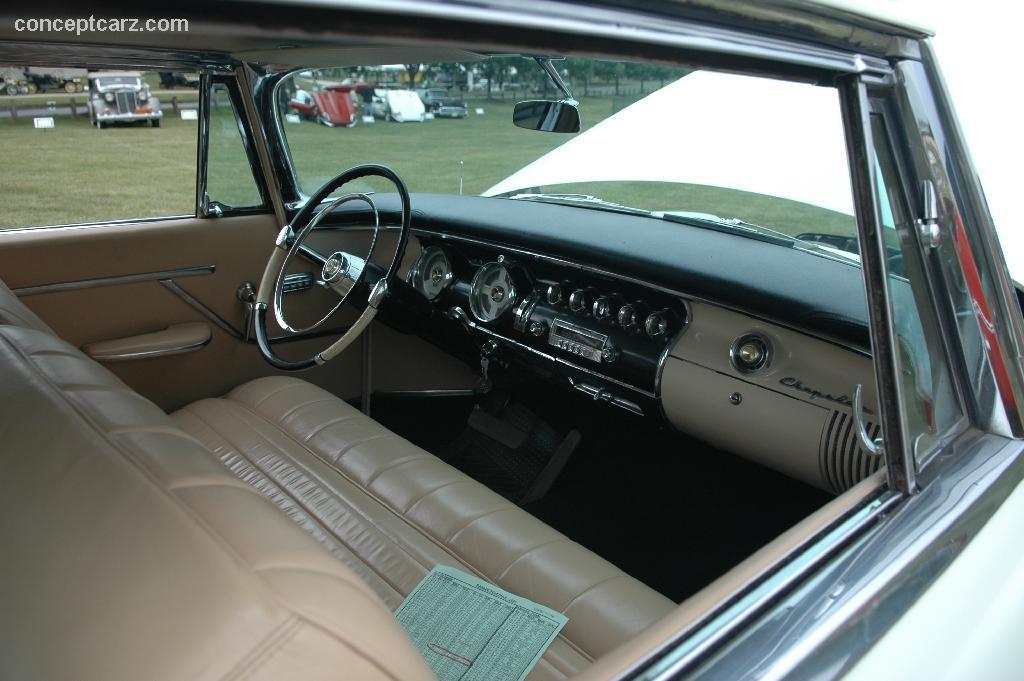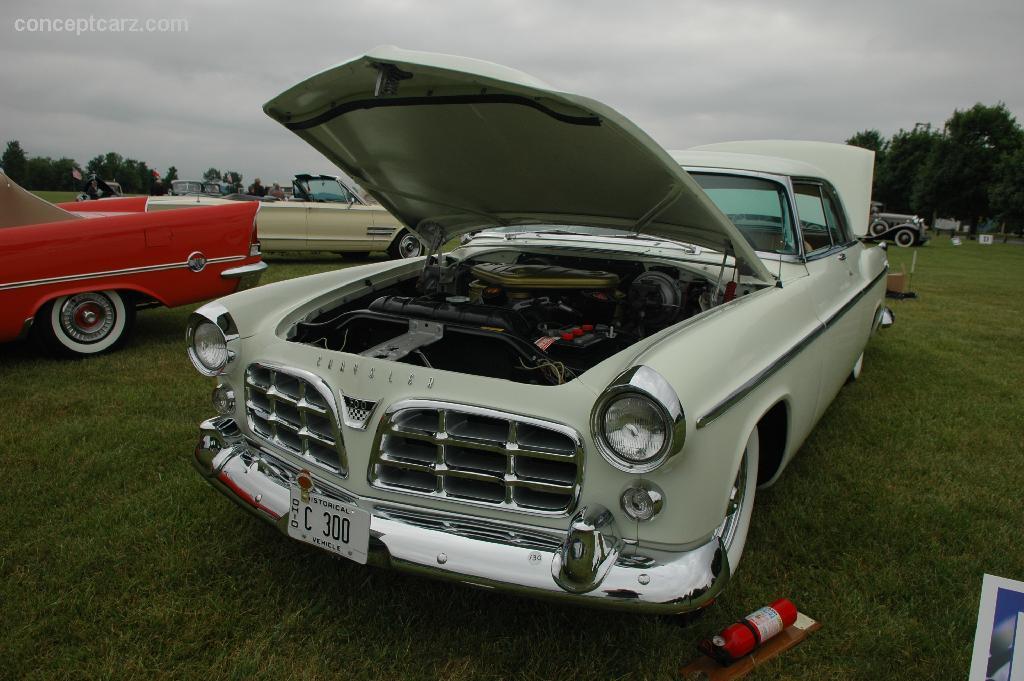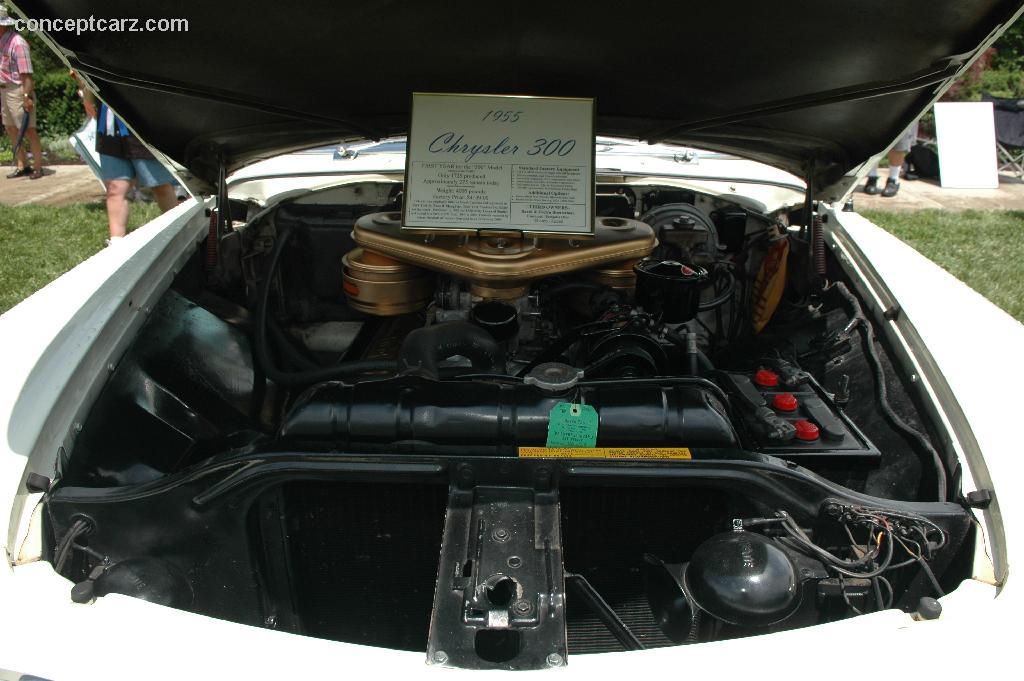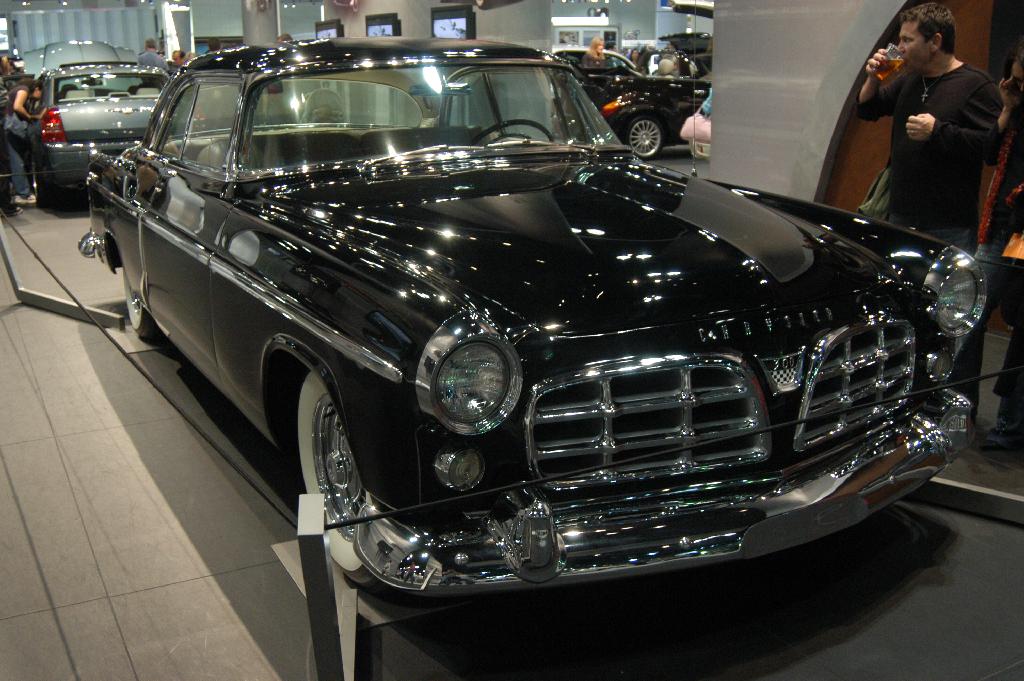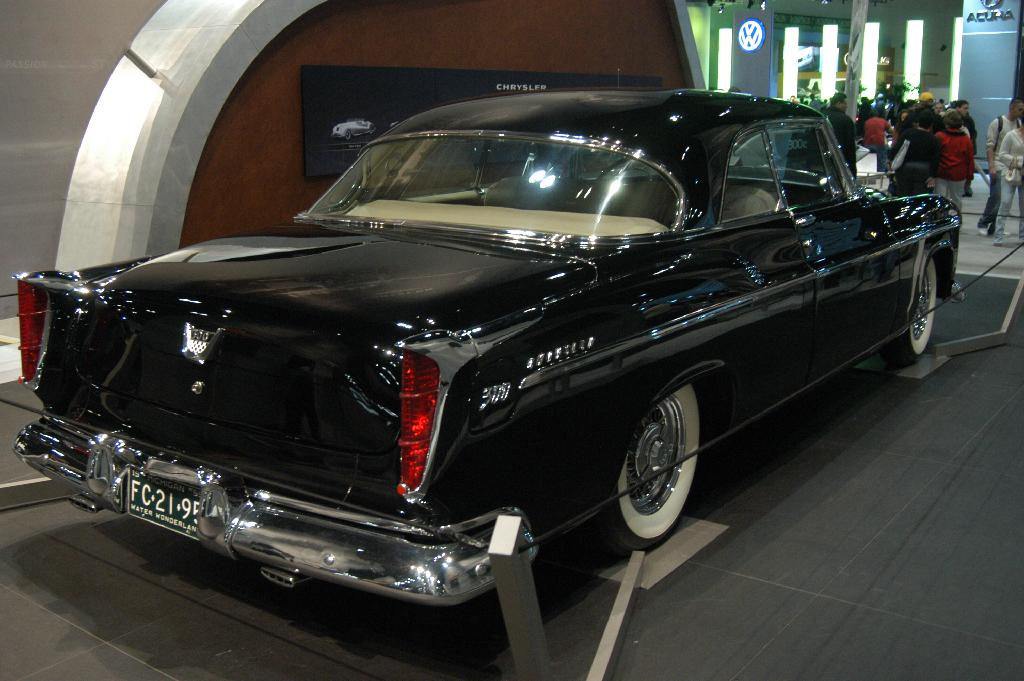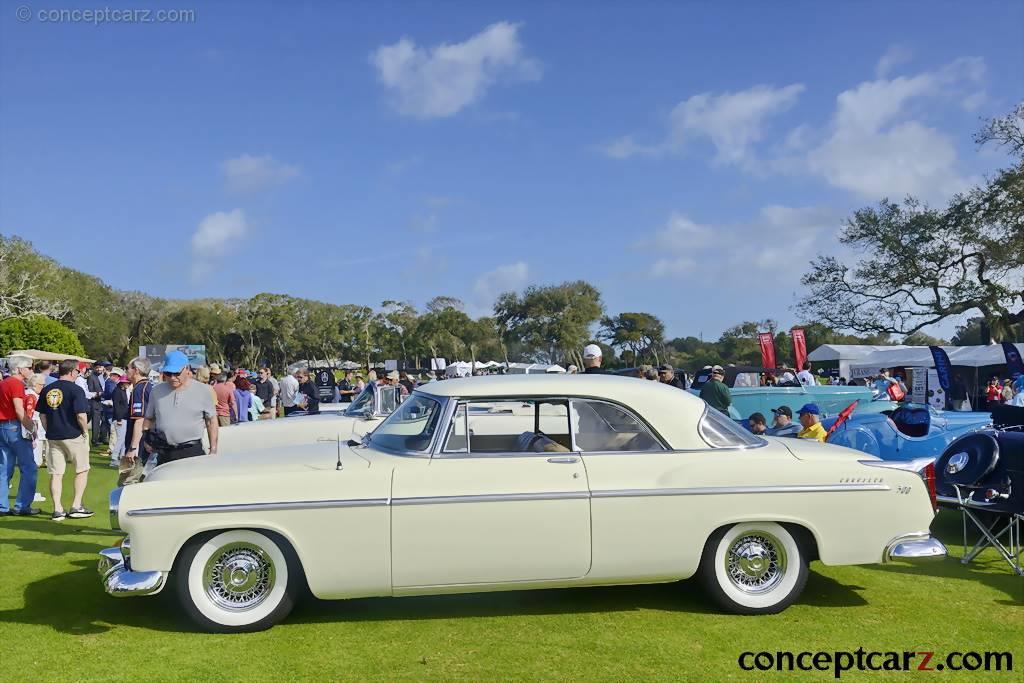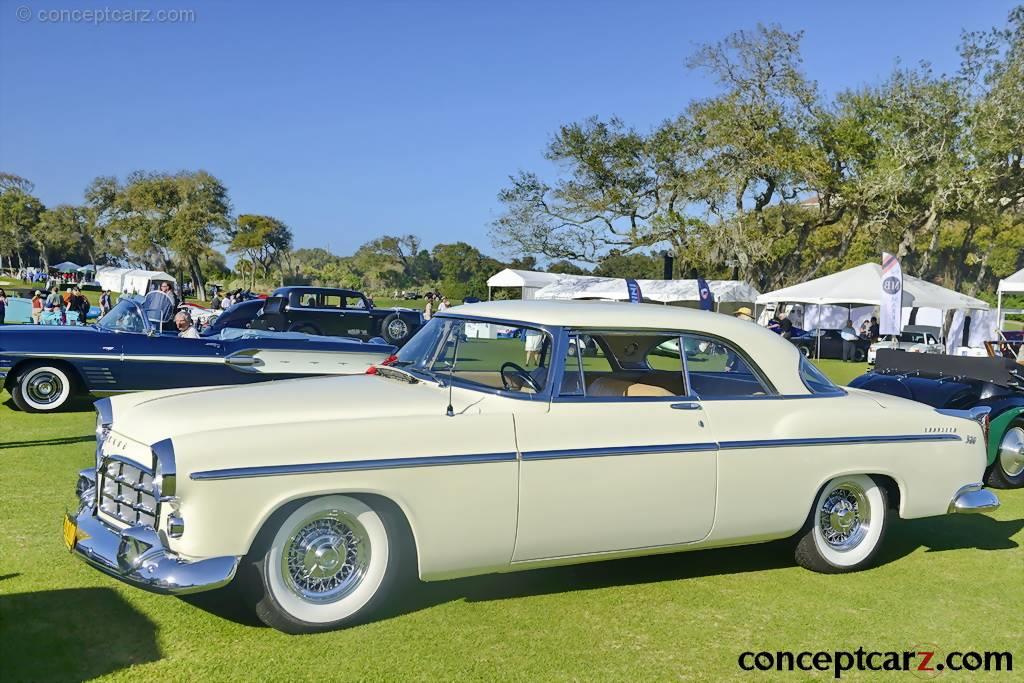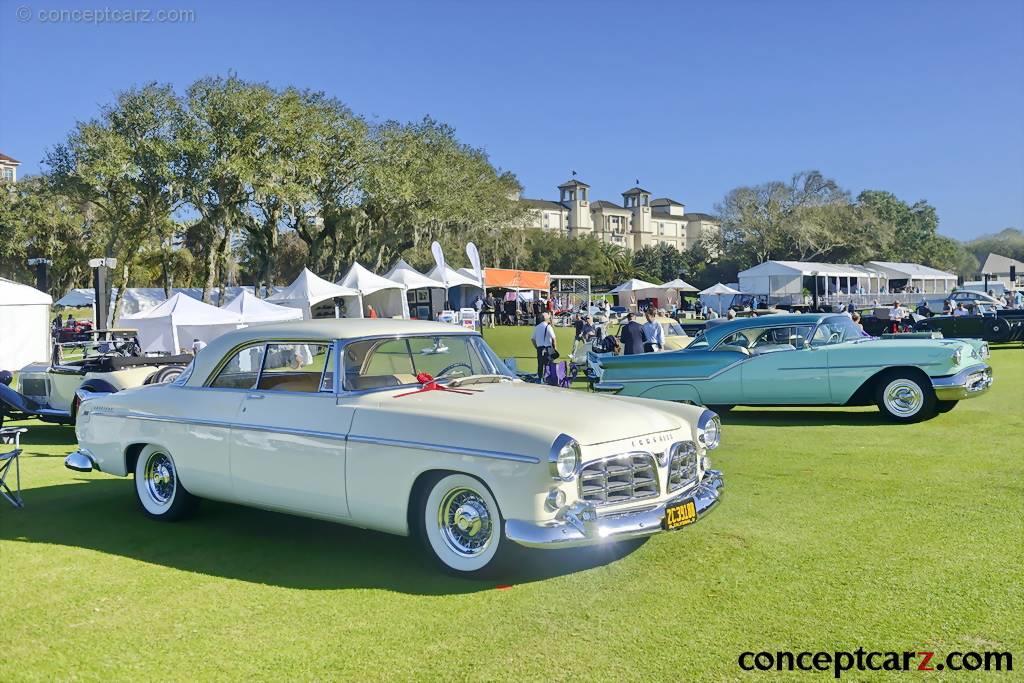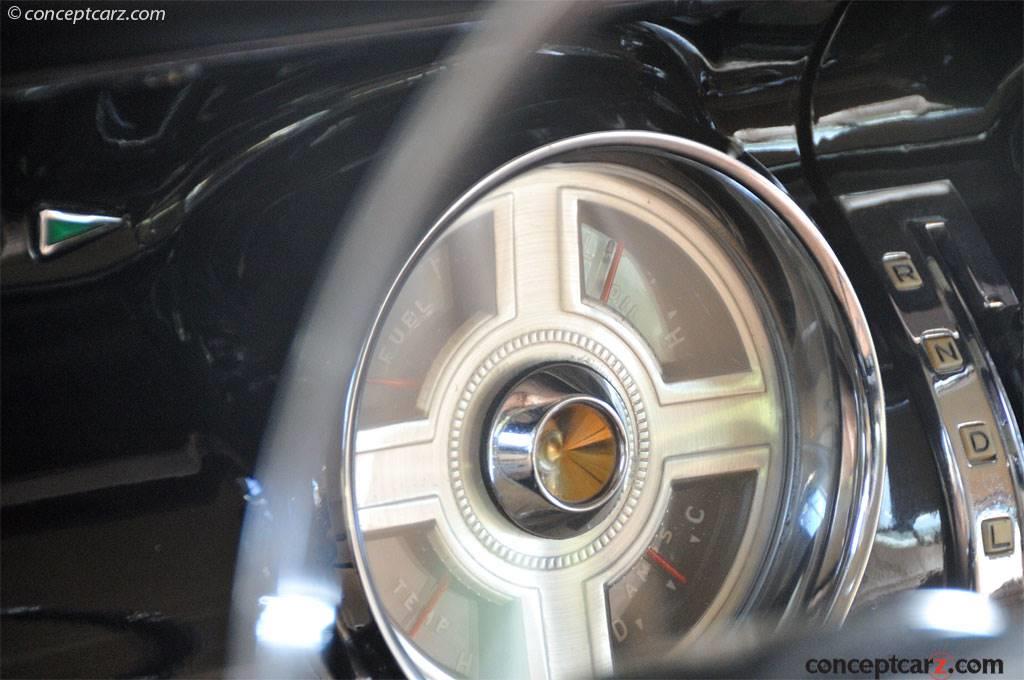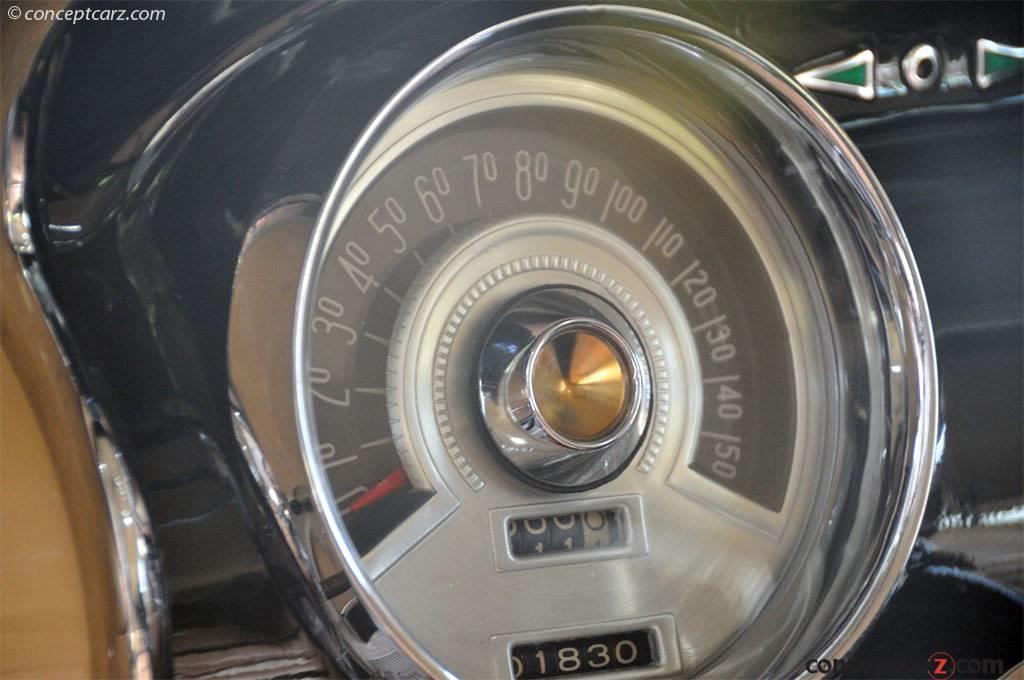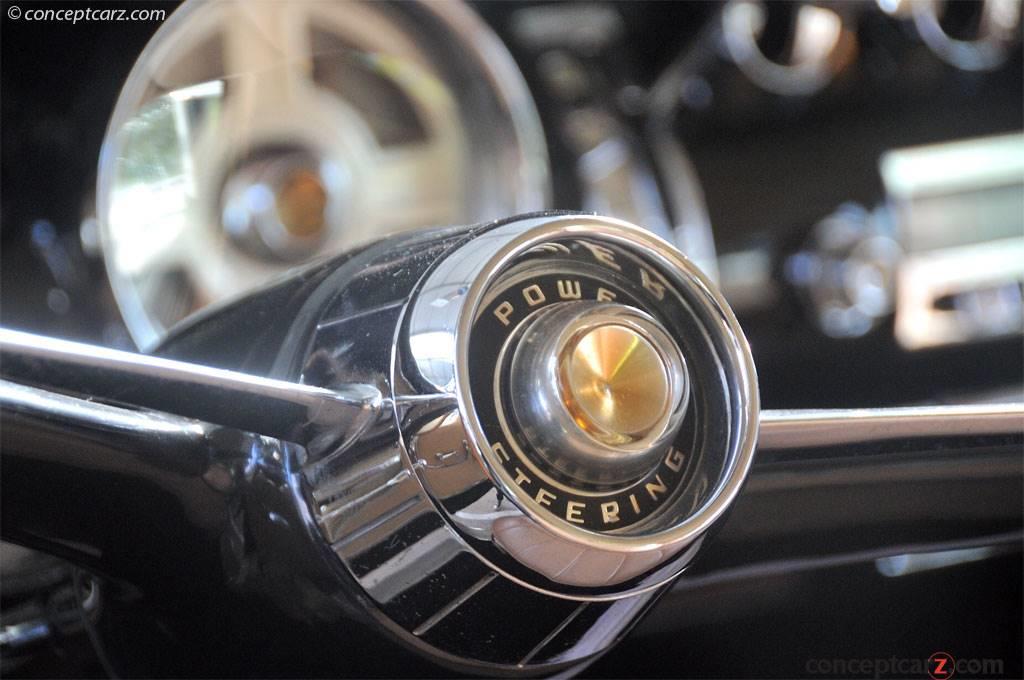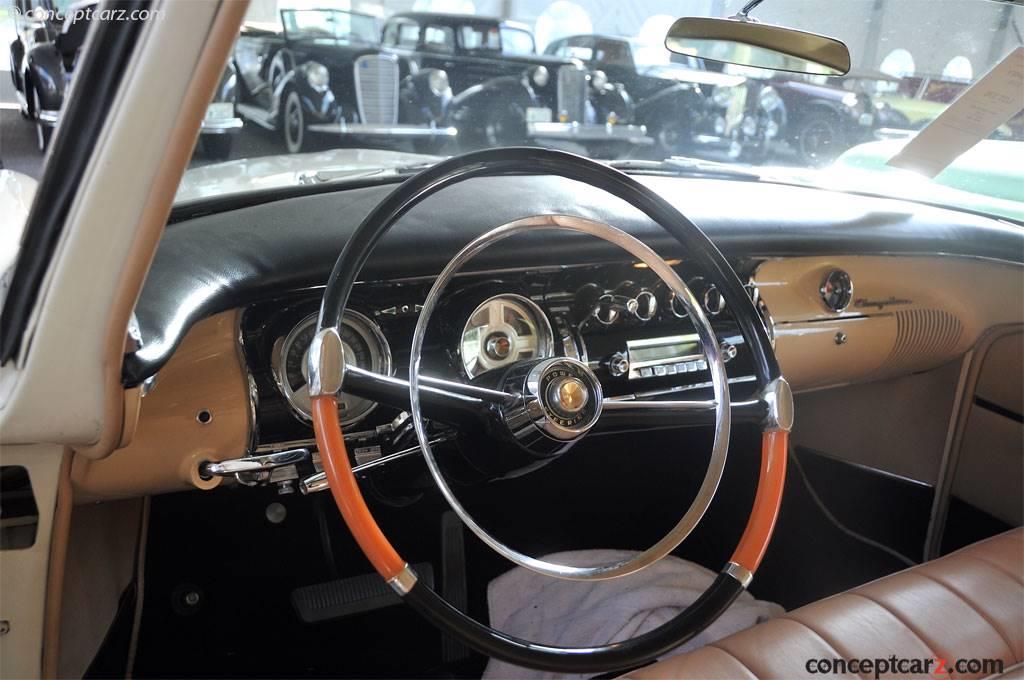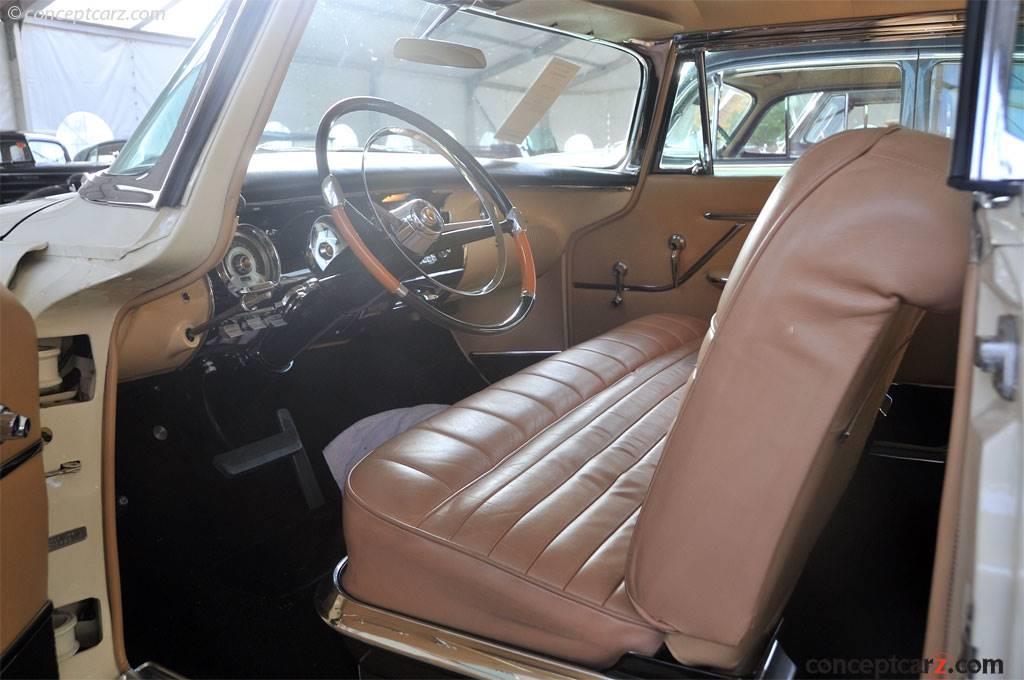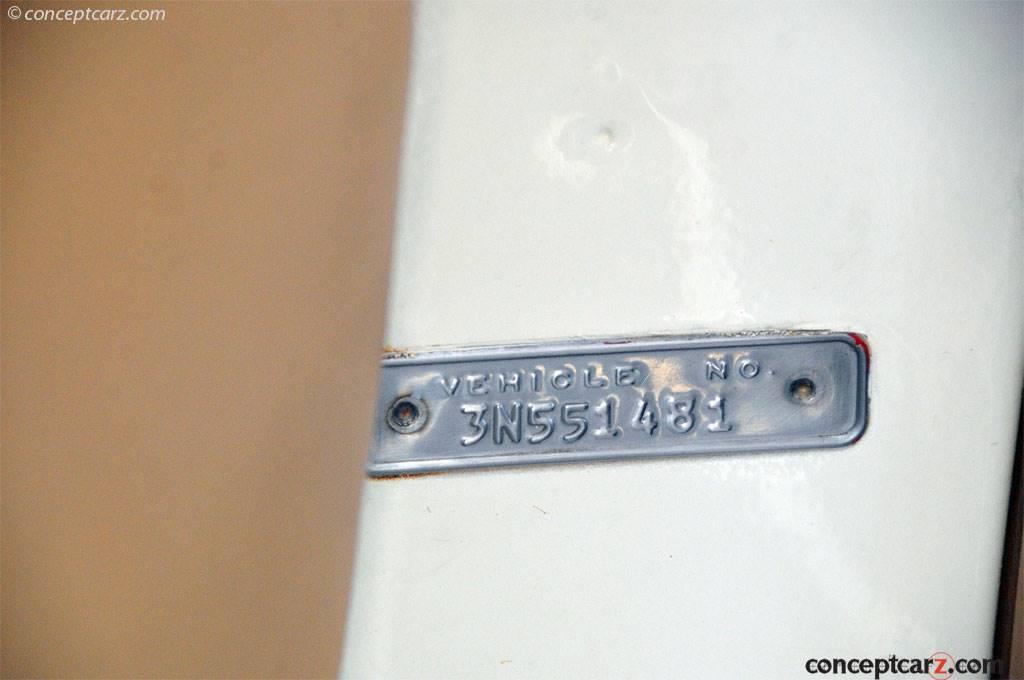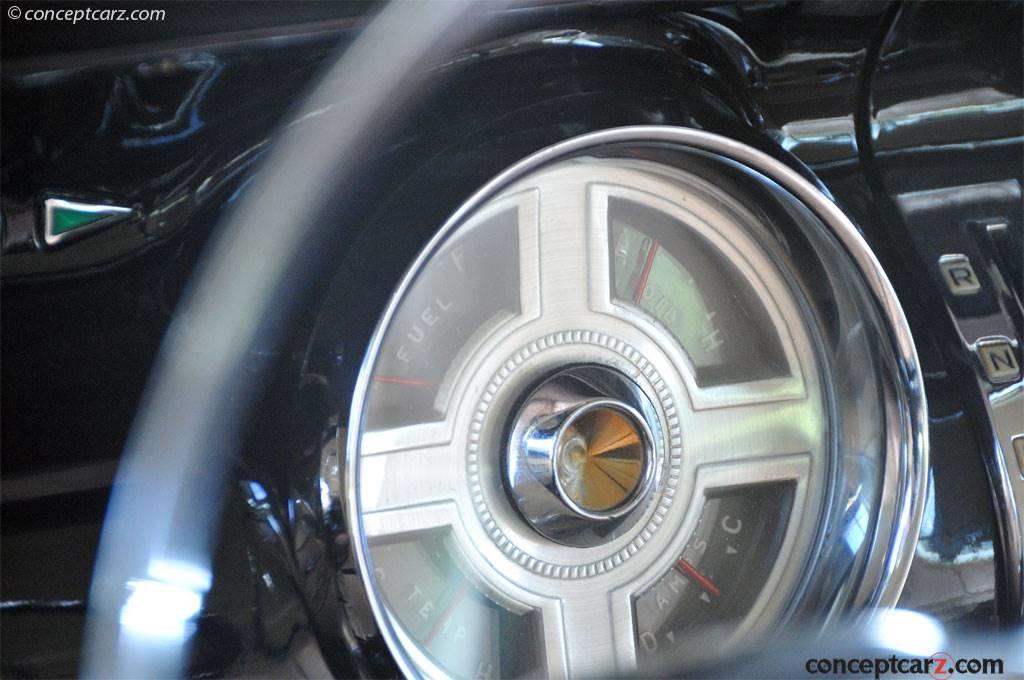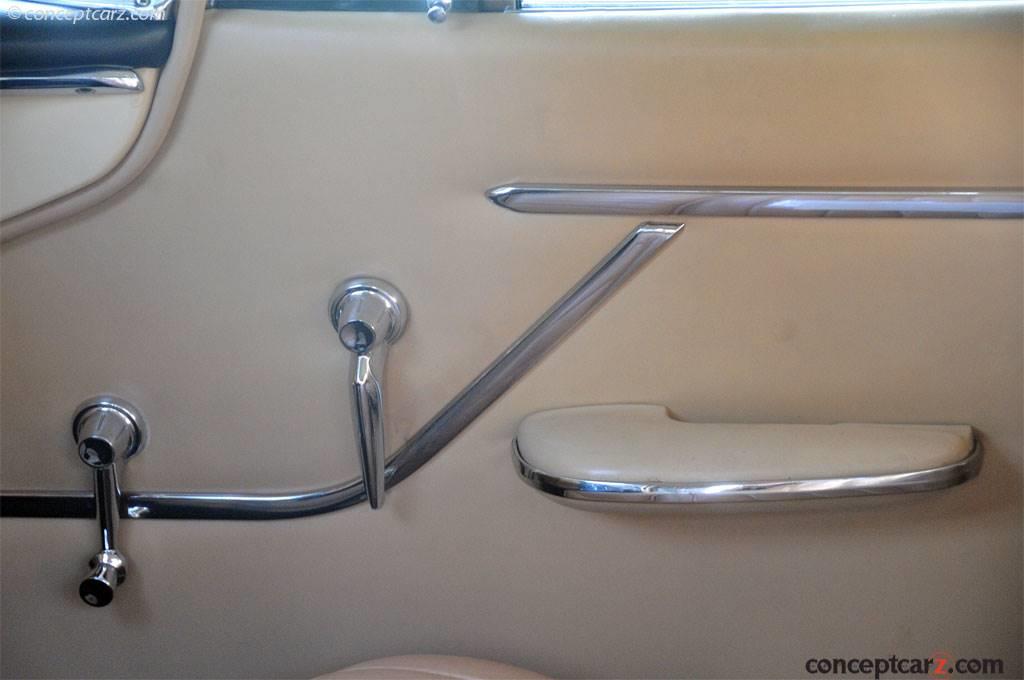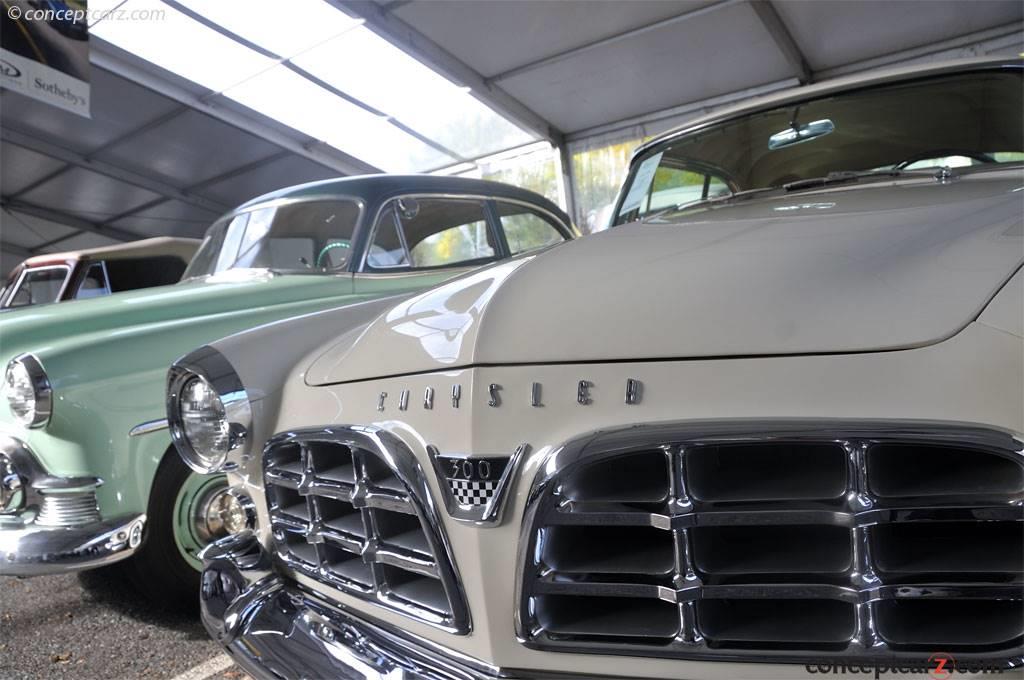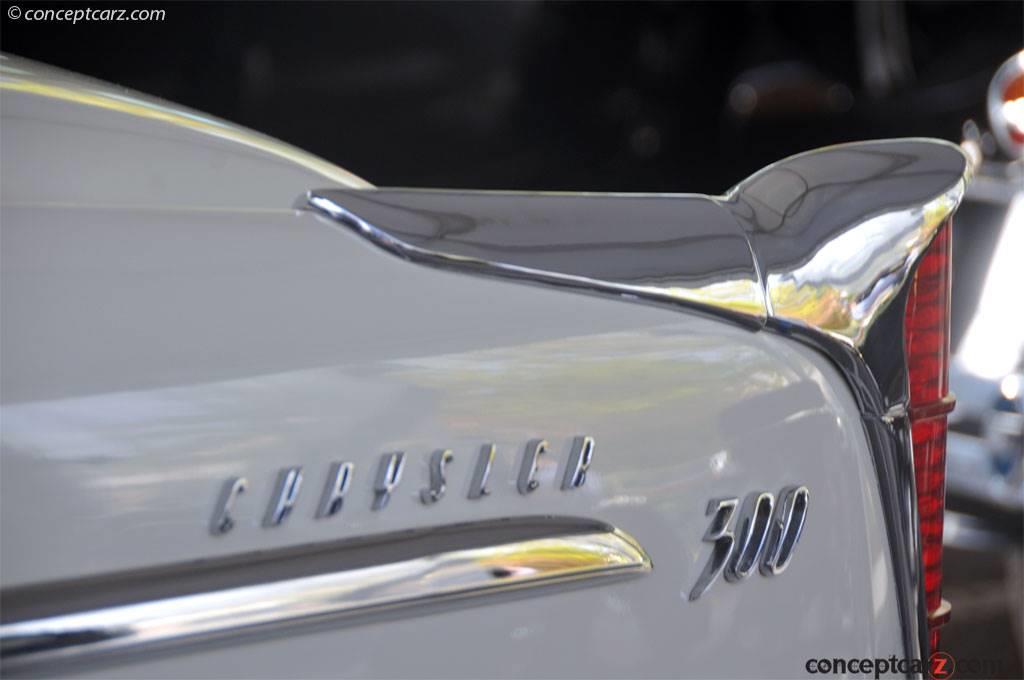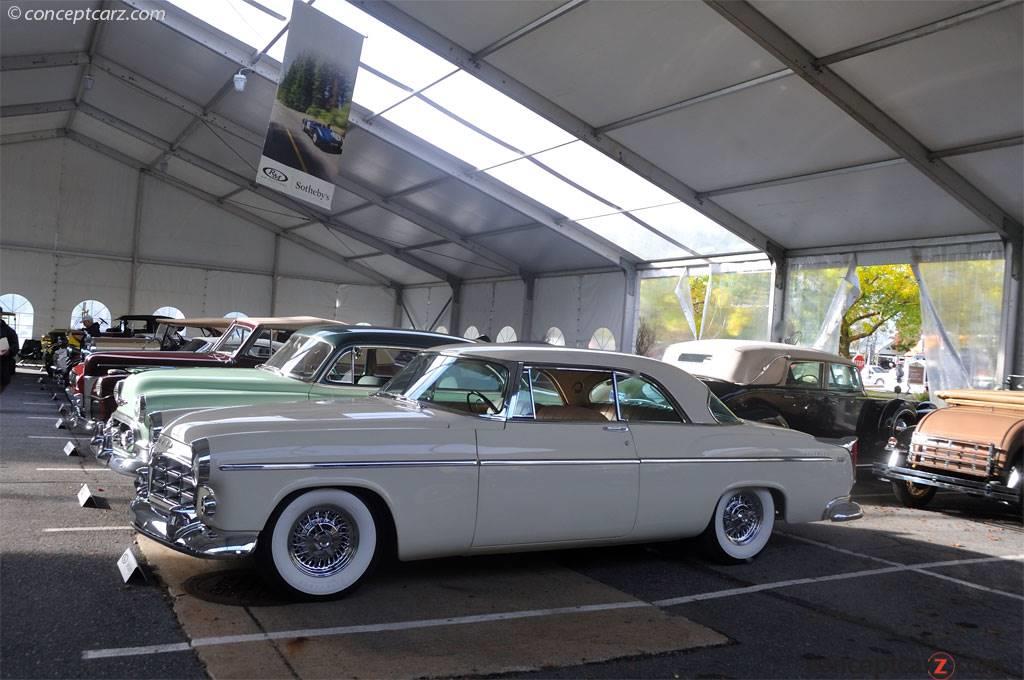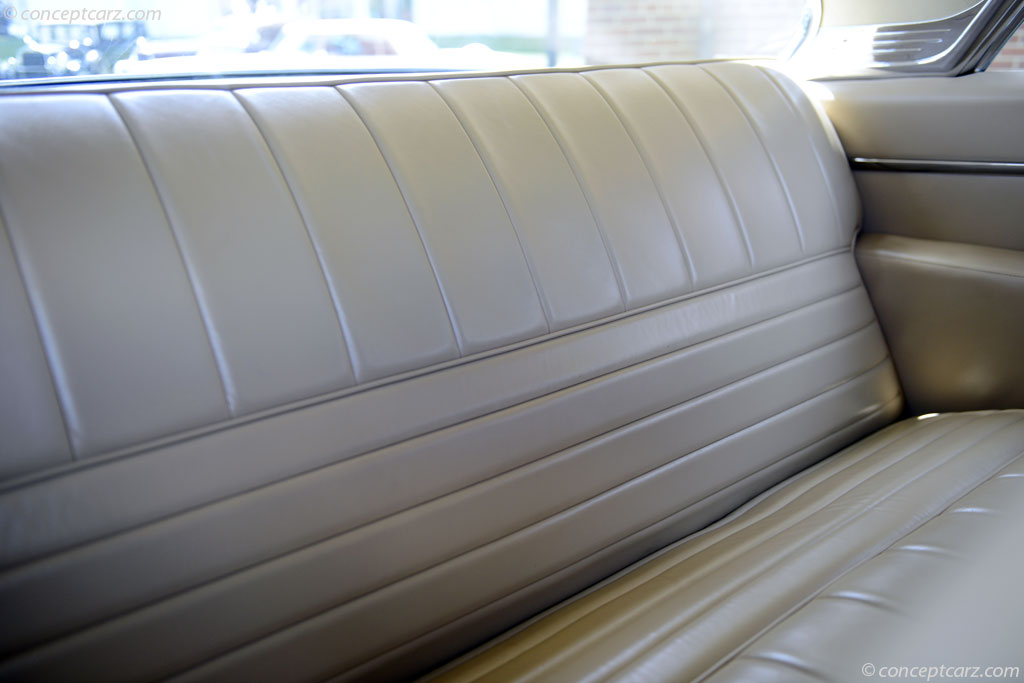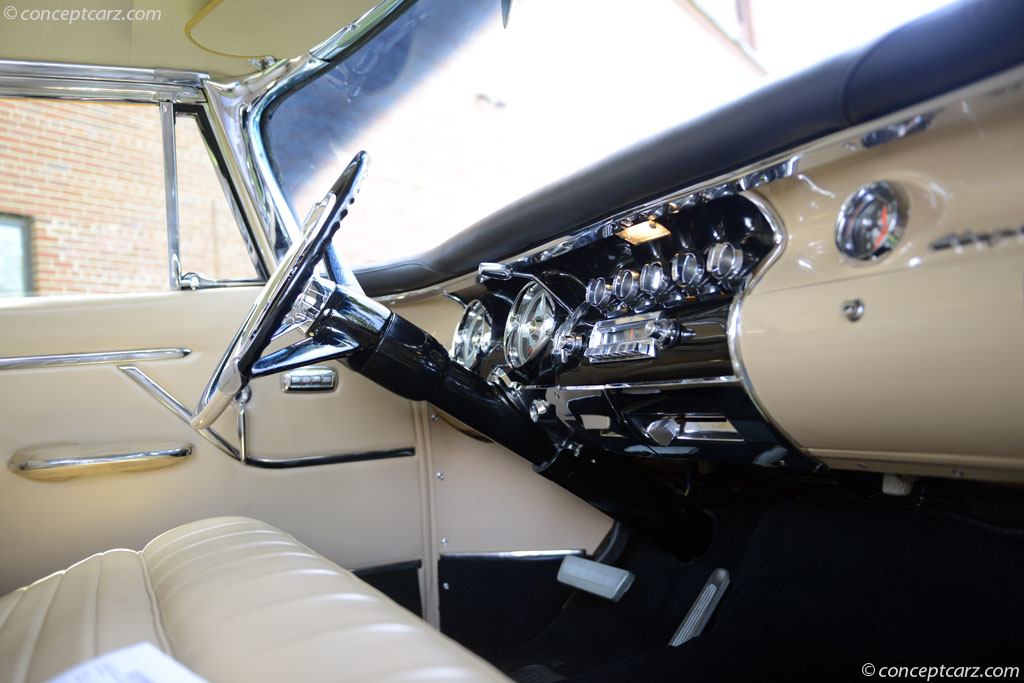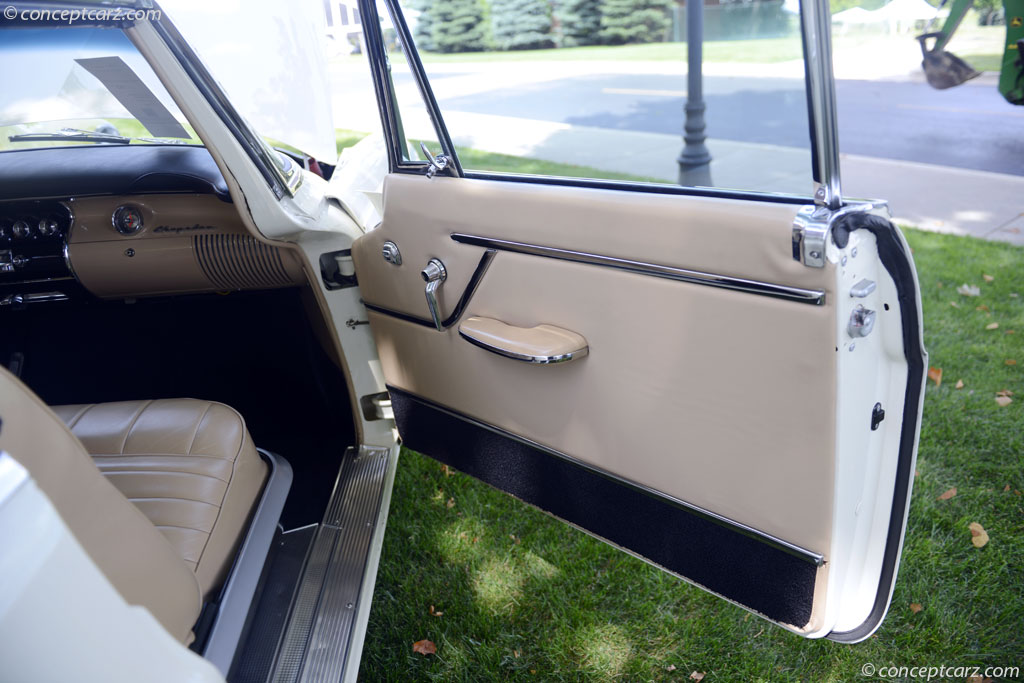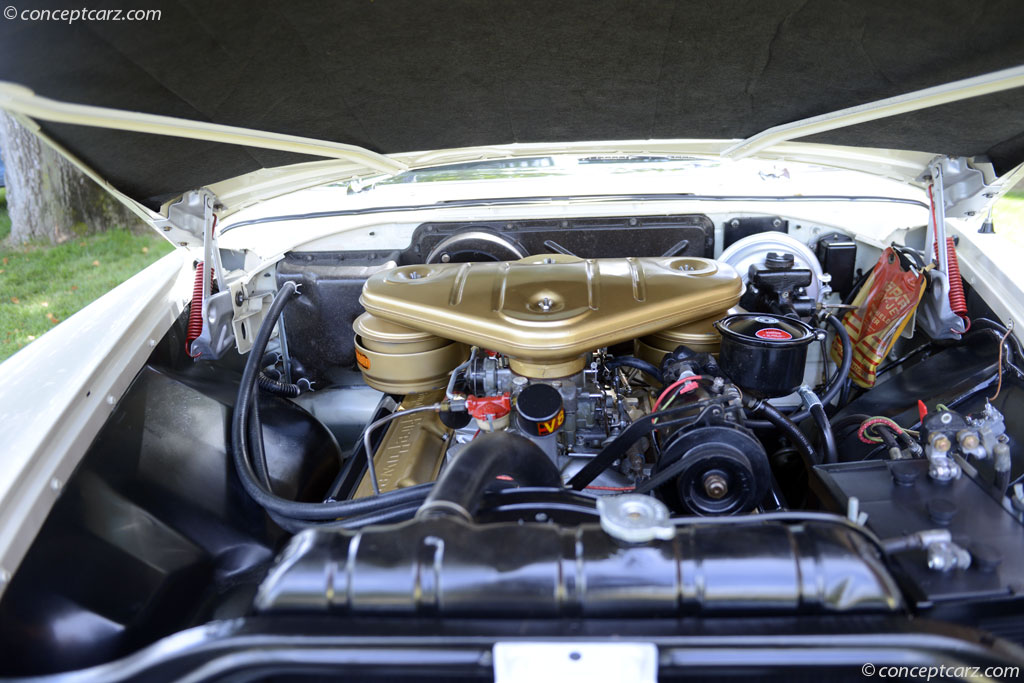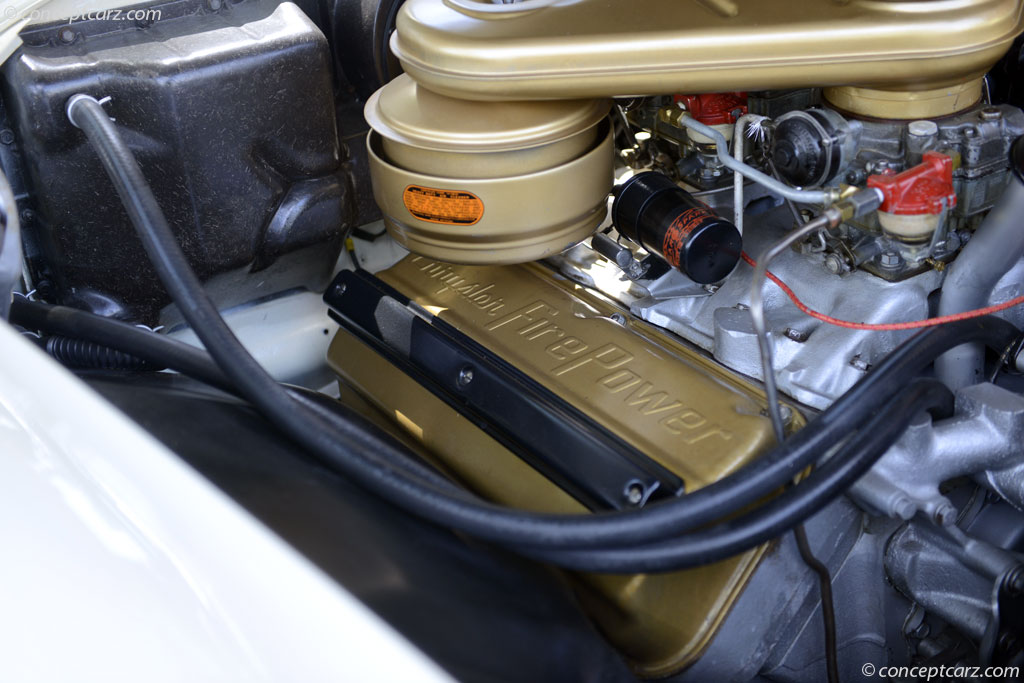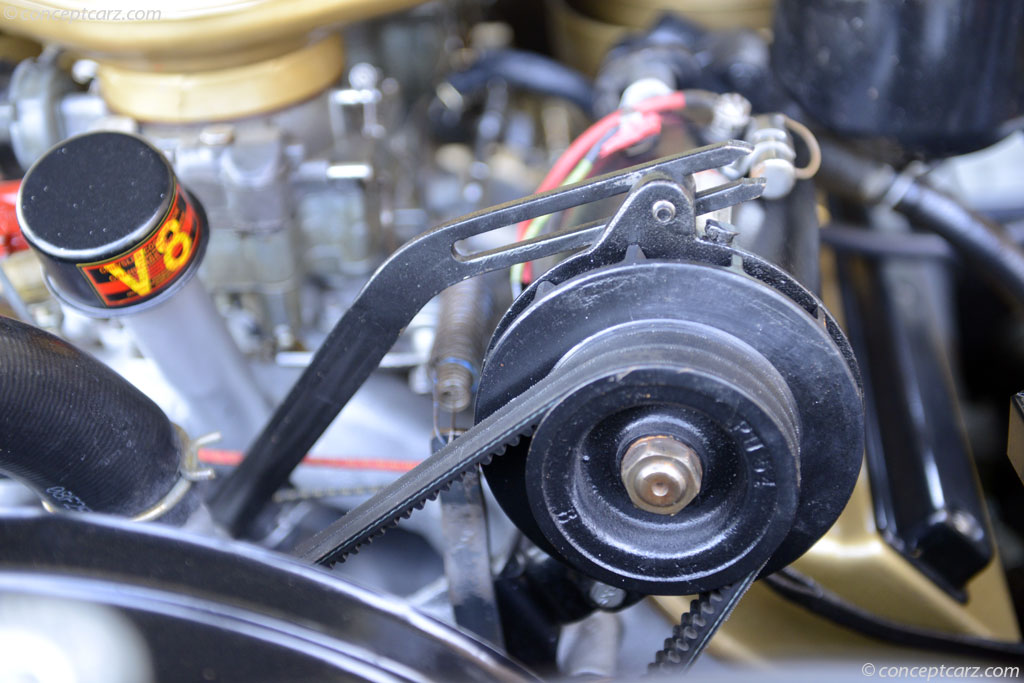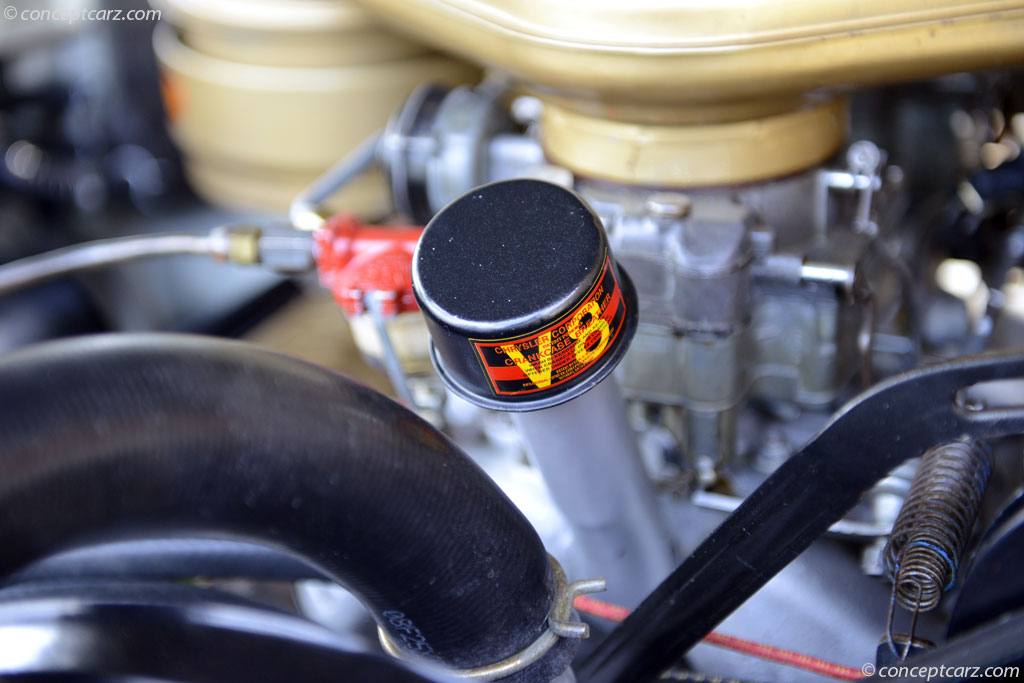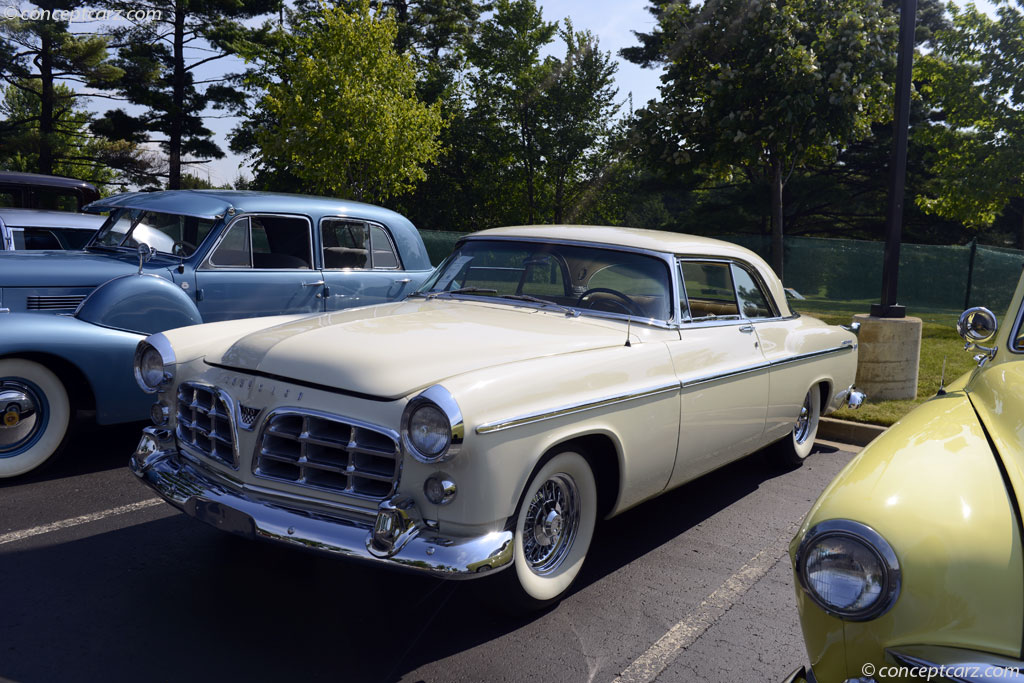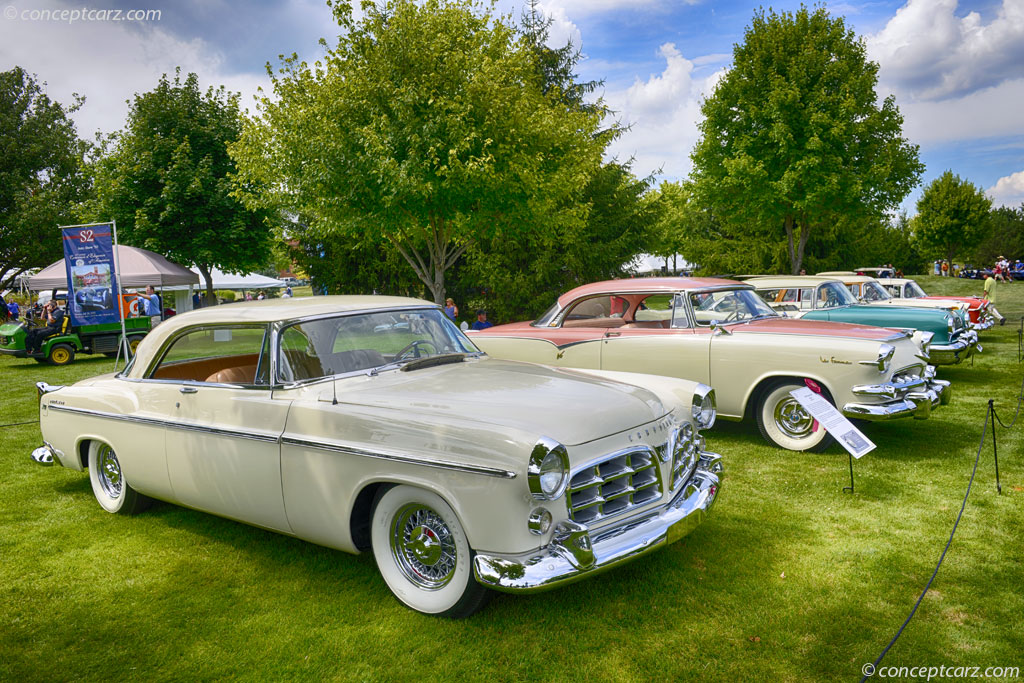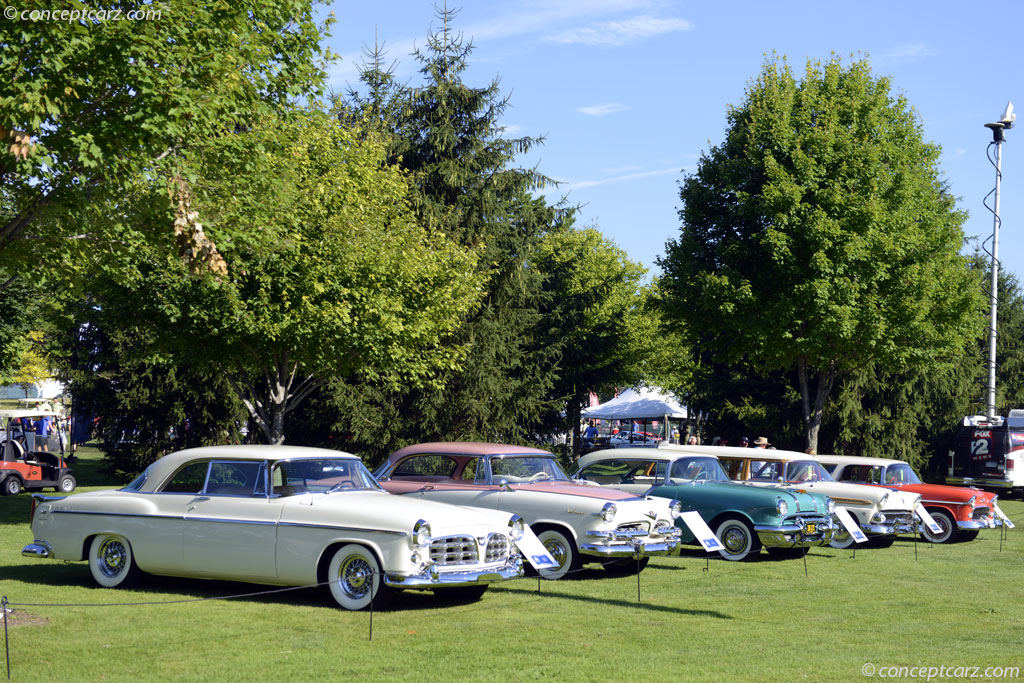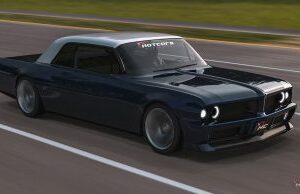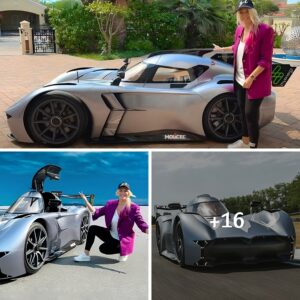The Chrysler Corporation introduced dramatically styled all-new models for 1955 with designs originating from Virgil Exner. The fresh new appearance was dubbed, ‘The $100 Million Look,’ and it helped establish every Chrysler Corp. product, including the inexpensive Plymouth and the ultra-exclusive Imperial, on a solid competitive footing for 1955.
The Chrysler C-300 of 1955 was the first of the marque’s legendary ‘Letter Serie’s and many consider it to be the very first American muscle car. It was the first postwar production car to produce 300 horsepower, a figure that represented the ‘300’ in its model name, and the most powerful engine available to the public since the supercharged Duesenberg Model SJ. It was an exclusive and expensive automobile when new, with a base price of $4,100, and just 1,725 examples were built.
The Chrysler C-300 was powered by the company’s first HEMI engine and utilized the information gained from Briggs Cunningham’s Chrysler-powered Le Man’s racing program. It had Twin Carter WCBF 4-barrel carburetors mounted on special intake manifolds designed to optimize breathing, a 331 cubic-inch displacement, higher compression, adjustable rocker shafts, solid valve lifters, and a full-race camshaft with long-duration valves that helped earn it 18 NASCAR victories in 1955. Other performance-oriented features included the heavy-duty suspension, lowered ride height, an improved PowerFlite automatic transmission, and a 3.54:1 rear axle. Tim Flock drove a C-300 at Daytona Beach to a 127.580-mph two-way average in the flying mile, more than seven mph faster than its nearest competitor, and he went on to win that year’s NASCAR Grand National Championship with a C-300.
At the time, Chrysler lacked the financial resources of GM and Ford, so instead, they borrowed from its existing product line to create the C-300. The New York bodyshell was selected and fitted with an Imperial front clip, Windsor rear flanks, a 300 badge inspired by Cunningham sports cars, and a New Yorker interior and dash. The exterior styling combined the Ghia studio ideas with those of Virgil Exner. The clean and crisp lines were accented by chrome outlines, special exhaust tips, 300-exclusive emblems with checkered-flag motifs, wire wheels with chrome centers and wide whitewall tires, and twin grille openings. The dual exhaust pipes were one-quarter-inch more in diameter than those used on the New Yorker.
the C-300 went beyond just brute strength – it was a refined, full-size automobile that had abundant luxury features and lavish interiors featuring leather upholstery and the top-line Chrysler dashboard (albeit, the speedometer was changed to read up to 150 mph).
The C-300 was the first of the legendary Chrysler 300 ‘Letter Series’ cars to follow through the next decade, ending with the 300L of 1965. It took the automotive world by storm when new and its influence remains profound in modern times. Chrysler described it as ‘America’s greatest performing motor car’ and its 300 horsepower Hemi was certainly more powerful than the Corvette and Thunderbird V-8s. The 300hp figure exceeded those of the more costly Cadillac V8s, which had 270 horsepower. At the time, this level of performance was reserved for the large and heavy luxury automobiles or the 2-seater sports cars. The 300 offered family space with best-in-class acceleration and performance. It was followed a year later by the 300B, which had 340-355 horsepower. Subsequent 300s carried the letters C through L, except the ‘I’ designation was skipped to avoid confusion with the number ‘1.’

